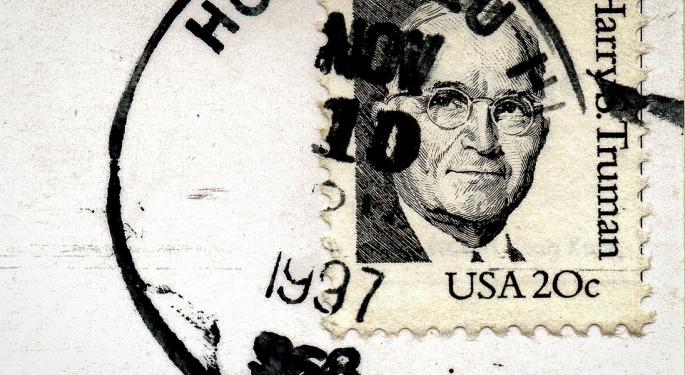20 Years Later: The Lesser-Known 'Black Monday' Of 1997
By the time the dust settled that Monday in October, nearly $700 billion in market capitalization had been eradicated in what was then the biggest one-day point drop in in the Dow Jones Industrial Average’s history and tenth largest percentage drop since 1915.
No, this isn’t the story of Wall Street’s notorious Black Monday, which celebrated its 30th anniversary last week. This was the so-called mini-crash of 1997, which took place 20 years ago Oct. 27.
What Exactly Happened?
It began overnight in Asia, as the Hang Seng Index fell 6 percent. It spread to Europe, where London and Frankfurt Indices fell as well. Concerns over the possible impact of Asian market turmoil spurred defensive maneuvers by U.S. professional traders and institutions seeking to reduce their exposure to stocks, either by selling equities or trading in futures.
The mini-crash of ‘97 saw the first application of trading halt circuit breakers adopted in 1988 as a response to the Black Monday crash of 1987. The steep declines triggered circuit breaker halts twice in that day’s session, leading the New York Stock Exchange to make the unprecedented move of closing markets almost a half hour early.
See Also: Wall Street's 'Black Monday' Turns 30: What Happened On Oct. 19.1987?
Many agreed that the breakers’ effectiveness left much to be desired. Arthur Levitt, then-SEC chair, commissioned a review of the day’s events. As a result of that review, the market has much higher thresholds for circuit breakers today and allows for the resumption of trading whenever feasible for orderly market closings.
That is a long way of saying, looking at the crash on a percentage basis, the halts may not have been warranted and the early market closure was probably unnecessary.
Lasting Impression
The 1997 mini-crash adds to the market lore of October as a serial killer of stocks (this October, for instance, also marks the 110th anniversary of the Panic of 1907, a.k.a. The “Knickerbocker Crisis”), but this year, investors don’t seem spooked. Thus far, the Dow is up 5 percent in October.
The very next day after the mini-crash, opportunistic buyers came in and after a dip at the open, stocks began to climb and eventually regained 60 percent or so of the previous day’s losses by the time markets closed on Oct. 28. Still, in retrospect, many see this event as the first harbinger of doom for the 1990’s bull market that ended with the dot.com bubble burst in 2000.
Related Links:
© 2025 Benzinga.com. Benzinga does not provide investment advice. All rights reserved.
Posted-In: Arthur Levitt Black Monday Knickerbocker Crisis mini-crash of 1997 Panic Of 1907Education Markets General Best of Benzinga



